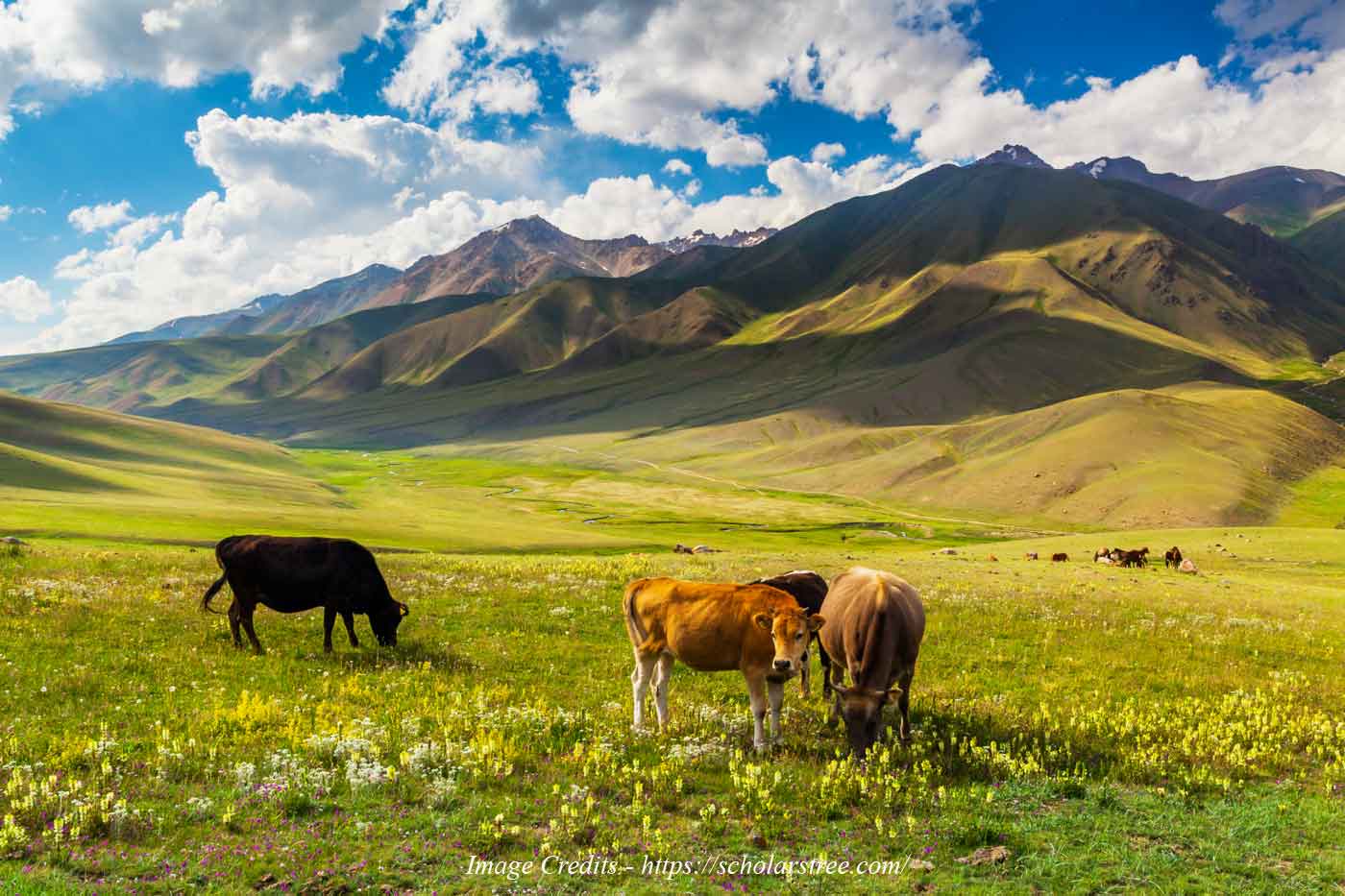One of the ancient forms of agriculture or a form of agro forestry where a natural alliance occurs among forest trees, forage crops and grazing animals in a mutually beneficial way.
An integrated approach to sustainable land use management by planting of multipurpose trees with grasses and/ or legumes and their utilization followed by in situ grazing by livestock is known as silvipastoral system (SPS).
Can be called as “managed grazing” system. Grazing by livestock in a controlled way can serve as a cost-effective vegetation and weed control method.
The main SPS comprise:
- Scattered trees in pasturelands.
- Timber plantations with livestock grazing areas.
- Pastures between tree alleys, windbreaks, live fences, fodder banks with shrubs
- Intensive silvopastoral systems.
4 Way Interactions in SPS
Firstly the soil provides nutrients for pastures and trees to grow, and then falling leaves restore nutrients to the soil, protecting it from erosion and moisture loss during rainfall. Also, pastures and fodder shrubs provide feed for animals, but at the same time contribute to improve soil fertility. The role of forest trees is to provide shade for cattle and pastures, as well as protection during the rains.
In the context of wastelands development, forage based livestock production together with environmental conservation has a special significance in the fast changing socio-economic array. In India, Indian Grasslands and Fodder Research Institute (IGFRI),Jhansi coordinates research on forages and grasslands for enhancing productivity and quality for enhancing livestock productivity by developing eco-friendly technologies for rehabilitation of degraded non-arable lands leading to sustainable livestock production, supply of energy, minor timber and generation of additional income to farmers.
Benefits of Silvipastoral Systems
Although SPS adoption implies an increase of costs, there is an increase of incomes due to a high productivity and production. Not all benefits will be possible in every silvopastoral system. Some may be more applicable than others to a particular farmer, depending on its design, level of management, external circumstances and management objectives. Here are some of the benefits:
With this system the degraded lands can be converted into fodder and fuel producing land.
- Restoration of biodiversity and improvement of soil can be achieved with this system through carbon sequestration and climate change mitigation.
- Main objective of this system is to optimize the land productivity, conserving plants, soils and nutrients and producing forage, timber and firewood on a sustainable basis.
- It involves substitution and/or re-plantation, in the existing vegetation by desirable species.
- The qualities which are considered while tree selection are, easy regeneration capacity, fast growth, short rotation nitrogen fixing ability, palatable leaves (fodder) high nutritive value and less toxic substances and high fuel value.
- The grasses and legumes should have complimentary colonizing ability, high production efficiency and high nutritive value.
- Reduced need for chemical or mechanical vegetation control underneath the
- Reduced fire hazard in the absence of brush and accumulated fuels
- Reduced need for nitrogen fertilization in grass/legume silvopastures
- Recycled nutrients from animal wastes benefit forage and tree growth
- Eliminated need for separate tree fertilization, if forage is fertilized
- Increased livestock protection from summer heat and winter chill
- Aesthetically more pleasing than either solid plantations or open pastures trees.
- Recycled nutrients from animal wastes is useful for forage and tree growth.
- When compared, higher percentage of improvement in land productivity and biomass production can be achieved with use of silvipasture systems than the conventional practices.
- Increased income opportunities through diversification of production
Improved Silvipastoral Systems
Improved silvopastoral systems involve growing of ideal combination of grasses, legumes and trees/shrubs for producing nutritious fodder and forage, fuel wood, timber and optimizing land productivity, conserving plants, soil and nutrients on sustainable basis on the same unit of land. This involves substitution or intervention in the existing vegetation by desirable species.
It can of be following types:
Silvopastoral system (Forestry + Pasture + Livestock)
In this system, the inter spaces between forest trees are utilized for cultivation of grasses and grass legume mixtures, which provides a two tier in situ grazing for livestock. During rainy seasons the animals prefer to graze green grass, but during dry seasons when there is no availability of grass, the foliage of the trees are consumed by the animals.
Agri-silvopastoral system (Agriculture + Forestry + Pasture + Livestock)
In this system the crops, forest trees and grasses are grown on the same land concurrently, which provide food grain to the farmers and feed and fodder to the livestock. During cropping seasons the animals are fed with hay (stored straw ) and supplemented with grasses and foliage of the trees.
Horti-pastoral system (Fruit orchards + Pasture + Livestock)
The inter spaces between fruit trees species are utilized for cultivation of grasses and grass legume mixtures.Here themanaged grazing is only during dormant season of the fruit tree.
SPS have also become an economical, ecological and productive alternative in many countries where exotic tree species or managed native forests are incorporated into farming systems allowing the production of trees and livestock from the same unit of land. If properly implemented, silvopasture can provide many economic benefits to the farmers and environmental benefits to the entire living ecosystem by reversing the effect of global warming.
Reference:
http://www.fao.org/3/ca2792en/ca2792en.pdf
https://www.researchgate.net/publication/315728170








